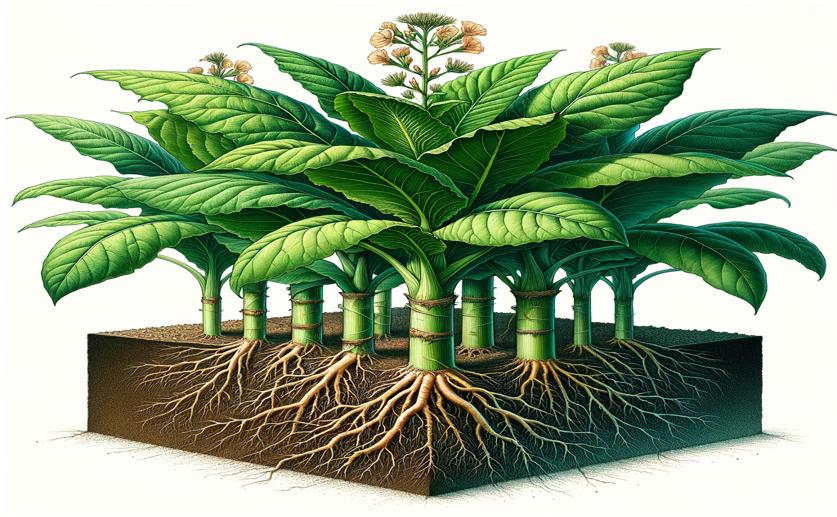
Understanding the Genes Behind Tobacco Plant Growth and Productivity
Jenn Hoskins
15th June, 2024

Image Source: Natural Science News, 2024
Key Findings
- The study by Guizhou University found that tobacco hybrids have more leaves and larger leaf areas than their parent plants, leading to increased biomass
- Certain genes related to leaf growth and biomass production are more active in tobacco hybrids, enhancing their growth
- Tobacco hybrids show unique DNA methylation patterns that influence gene activity, contributing to their superior biomass
References
Main Study
1) Transcriptome analysis reveals the key role of overdominant expression of photosynthetic and respiration-related genes in the formation of tobacco(Nicotiana tabacum L.) biomass heterosis
Published 14th June, 2024
https://doi.org/10.1186/s12864-024-10507-8
Related Studies
2) What is crop heterosis: new insights into an old topic.
3) QTL for Maize Midparent Heterosis in the Heterotic Pattern American Dent × European Flint under Corn Borer Pressure.
4) Importance of epistasis as the genetic basis of heterosis in an elite rice hybrid.
Journal: Proceedings of the National Academy of Sciences of the United States of America, Issue: Vol 94, Issue 17, Aug 1997
5) Parental variation in CHG methylation is associated with allelic-specific expression in elite hybrid rice.



 14th June, 2024 | Jim Crocker
14th June, 2024 | Jim Crocker